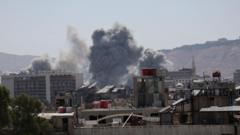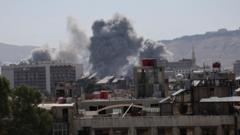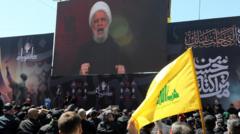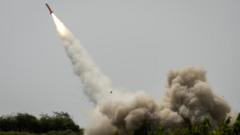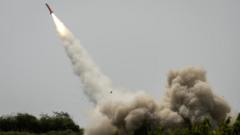Senior General Min Aung Hlaing has outlined plans to redesign Nay Pyi Taw after a 7.7 magnitude earthquake caused widespread destruction, signaling a shift towards earthquake-resistant infrastructure and the relocation of government offices.
Nay Pyi Taw's Redesign: A Response to Earthquake Devastation
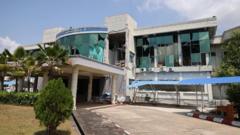
Nay Pyi Taw's Redesign: A Response to Earthquake Devastation
Myanmar's capital will undergo significant changes following extensive damage from a recent earthquake, as announced by military leaders.
Following the devastating earthquake that struck Myanmar on March 28, resulting in thousands of casualties, the country's military ruler has announced plans for a major redesign of the capital city, Nay Pyi Taw. Senior General Min Aung Hlaing revealed during a recent government meeting that the buildings which collapsed were primarily situated on unstable soil, leading to a directive that all new office buildings must be constructed to withstand future seismic activities. Preliminary soil tests will be conducted prior to any rebuilding initiatives.
Reports by the BBC highlight that roughly 70% of government structures in Nay Pyi Taw sustained considerable damage. In light of this, several government offices have already shifted operations to Yangon, the previous capital. The recent earthquake, measured at a magnitude of 7.7, notably affected not only Myanmar but was also felt in regions of Thailand and southwestern China, with state media indicating that over 3,500 lives were lost and more than 5,000 individuals injured.
Nay Pyi Taw, which means "seat of the king," was relocated and established as the capital in 2005, roughly 370 kilometers from Yangon. This planned city, notably larger than London, features extensive road systems and infrastructure that remains largely underutilized. The city's architectural landscape includes modern shopping centers, luxury hotels, and various public amenities, but the current focus has shifted to urgent reconstruction efforts.
Compounding the chaos, Myanmar has been grappling with ongoing civil conflict since a military coup in 2021, resulting in clashes between the military junta and various ethnic militias. Following a 20-day ceasefire announced by the military council on April 2 to facilitate relief operations, reports emerged that hostilities had not entirely ceased. Key government departments, including the Ministries of Labour and Planning, have reported heavy damage, with reconstruction anticipated to take several years.
In efforts to safeguard invaluable cultural and historical documents, staff at the National Museum in Nay Pyi Taw have undertaken the relocation of manuscripts, inscriptions, and countless books. As parts of the government migrate their operations to temporary structures built from steel frames, the long-term strategy for Nay Pyi Taw's recovery and redesign continues to evolve amidst ongoing challenges.





